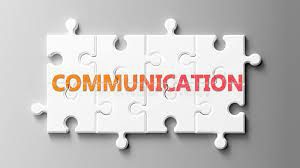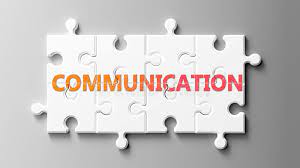
The number one reason why organizations hire consultants, coaches and trainers is usually related to the statement “We need better communication!” What’s interesting to me is that if I interviewed every member of your leadership team and asked them what they do all day, every day, all the live long day, what do you think the number one answer is? You guessed it… “Communicate”
So clearly it’s not the volume of communication that is the problem, but the actual quality of it.
Think about the communication you conduct on a daily and weekly basis. Now think of it like a gigantic puzzle. Most days you are truly only focused on a few pieces of it. The problem is that those you are communicating with are probably focused on a completely different puzzle pieces. While all of these pieces are extremely important, if you all aren’t focused the same piece then you are going to create friction, conflict and an overall lack of effective communication.
Sound familiar?
So how do we address this multi-layered, ever-changing, complex puzzle of communication?
Friends, if I had a simple solution to that question, I promise I’d share it with you. Unfortunately, there is no one solution because communication isn’t a specific problem that one attempts to solve. Communication is a dilemma that you and your organization get to wade into and contemplate on a daily basis. Together you get to make the decisions that will develop some guidelines around the expectations you all have with regards to how, what, and why you choose to communicate among your teams and with others.
Until that time, a big piece of this puzzle that could help you along your journey to being and effective communicator is to remember that communication isn’t for YOU, it’s for the OTHER person.
Think about the last email you banged out today and ask yourself:
Was I simply spewing out information on this medium to get my thoughts into the world, to defend my position, to show everyone how brilliant I am, or how much I understand about the topic?
Or was I completely focused on the receiver of my message, their particular style of communicating, their number one problem that is keeping them up at night? Did I address their unique nuances and distinct communication patterns? Did I pay attention to past interactions I’ve had with that individual and how did I use that information to connect with them this time?
Most of the time, if we are truly honest with ourselves, the communication we are putting out there into the world, isn’t really for the other person, it’s exclusively for ourselves. Because we know ourselves and how we prefer to consume information, we tend to feel proud of how we are communicating and tend to blame others when they “Don’t get it or don’t understand” where we are coming from.
Look, I get it. Many times you are communicating with multiple people and the demands on your time require that you spew out as much information as possible and hope that some of it sticks. Commonly referred to a “hope management.” And if that’s your go to style I would like to ask you another valuable question:
How’s that working for you?
Today while you are hammering out emails, conducting live or virtual meetings, or simply having a conversation with a team or family member, make a decision to focus your communication on the OTHER person, instead of yourself. See how that works for you.
Cheers to your successful communication, achievement, and above all your health
One Quarter Turn at a Time.
Thoughts for the week:
Communication is the bridge between confusion and clarity. -Nat Turner
Information and communication are often used interchangeably but they signify quite different things. Information is giving out- Communication is getting through. -Sidney Harris
Communication to a relationship is like oxygen is to life. Without it, it dies. – Tony Gaskins
A relationship without communication is just two people. -Unknown
Looking forward to our next connection


Recent Comments